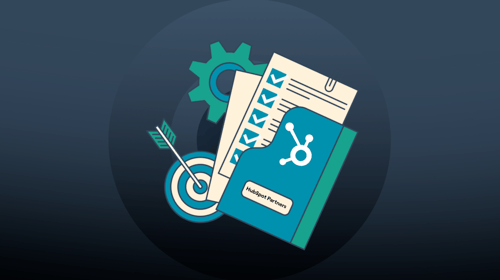In this article, we’ll cover everything HubSpot users need to know about the three new regional data centers, including their importance, migration processes, and the benefits they offer for large organisations navigating complex data needs.
As regulations on data storage and sovereignty become increasingly stringent, organizations need solutions that keep them compliant.
Starting February 4, 2025, HubSpot is launching three new regional data centers in Sydney, Australia; Montreal, Canada; and Oregon, United States (West), providing a way for companies to meet data residency requirements while using a modern, flexible CRM instead of being locked into outdated systems.
This expansion addresses the growing demand for enhanced regional performance, stricter data compliance, and improved reliability for HubSpot’s enterprise customers. For large organizations managing significant amounts of customer and operational data, these new data centers are an important step in ensuring scalability, compliance, and customer trust.
The importance of HubSpot’s regional data centers
HubSpot’s new regional data centers in Australia (Sydney), Canada (Montreal), and the United States (Oregon) are designed to improve performance, compliance, and overall service for businesses, especially those with more complex data requirements.
Here’s why this matters.
1. Compliance with local regulations
With increasing demands for data to be stored within specific regions, HubSpot’s new data centers offer greater flexibility in meeting these regulatory requirements. This is especially important for businesses in regulated industries, like finance, healthcare, and government.
Here’s what this means for users:
- Control over data location: You can now choose where to store your data, ensuring it meets local data protection laws.
- Compliance made simpler: Businesses that need to adhere to local laws around data residency can use these new data centers to meet regulatory requirements without the need for custom solutions.
- Easier to manage risk: With data stored in the region where you operate, you can mitigate risks related to international data transfers and ensure better control over sensitive information.
2. Supporting regulatory compliance
Regulators are increasingly focused on how companies store and handle citizens' data. For larger companies, especially those in more regulated regions, this can be a complex issue.
HubSpot’s regional data centers provide a solution:
- Local data hosting for local laws: Many countries have specific laws about where data can be stored. These new data centers help ensure that your business stays compliant with local regulations.
- Addressing compliance barriers: In the past, some businesses may have struggled with using HubSpot due to data residency issues. With the new data centers, this problem is resolved, opening up HubSpot to more businesses that need to meet local compliance standards.
- Future-proofing your data: As government regulations around data sovereignty continue to evolve, HubSpot’s regional centers ensure that your business can stay ahead of compliance requirements.
3. Improved performance
By hosting data closer to your users, these new data centers will help reduce delays, providing a faster and more reliable experience for businesses.
Here’s how it can make a difference:
- Reduced latency: With data hosted closer to your team and customers, response times are faster, improving the overall user experience.
- Faster access: Reduced delays in accessing data and performing tasks, like updating customer records, running reports, and automating workflows.
- Better regional experience: Localized infrastructure means businesses in specific regions, like Australia, will benefit from improved speed and reliability.
4. Streamlined sales and implementation for larger businesses
For larger businesses with complex needs, these new data centers also make it easier to adopt and implement HubSpot:
- Faster decision-making: By offering clear data residency options, you can address concerns early in the sales process, helping to speed up the decision-making process.
- No need for legacy systems: Many large organizations are stuck with outdated technology due to data residency requirements. With HubSpot’s new data centers, you now have a modern, compliant solution that meets these needs.
- Reduced complexity: For large companies with complex data requirements, this new flexibility can reduce friction during implementation and help get your HubSpot account up and running faster.
Everything you need to know about HubSpot’s regional data centers
HubSpot’s expansion of its global data infrastructure is designed to meet the needs of international organisations operating in multiple countries and ensure that the data is stored where it makes the most sense for both compliance and performance.
Here’s a breakdown of the key details about the new data centers.
Locations of the new data centers
Starting February 4, 2025, HubSpot will launch three new data centers:
- AP1 (Sydney, Australia)
- NA3 (Montreal, Canada)
- NA2 (Oregon, United States)
These new locations aim to provide businesses with more options for data hosting, ensuring that your business can comply with local regulations while also benefiting from improved performance.
Launch timeline
The new data centers will go live on February 4, 2025.
That’s when HubSpot users will start receiving notifications about eligibility for migration. The exact timeline for each customer may vary depending on their location and existing data center setup.
It’s important to be aware of the migration windows and ensure that your HubSpot account is ready for any upcoming changes. HubSpot will notify you at least 30 days in advance of any migration, so you can plan accordingly.
Customer eligibility for migration
HubSpot will determine eligibility for data migration based on a few factors, primarily location. For example, businesses located in Australia may be eligible to migrate to the new data center in Sydney, while Canadian customers could move to Montreal.
Here’s how it breaks down:
- Existing HubSpot users: If you’re an existing customer, HubSpot will reach out to inform you about your eligibility to migrate. You’ll have the option to accept or opt-out of migration.
- New accounts: For any new accounts, HubSpot will automatically assign your account to a data center based on your geographical location.
- If your location matches the recommended data center (e.g., an Australian business will be directed to Sydney), the system will automatically assign it to you.
- If there are multiple options or your location doesn’t match the preferred data center, you’ll be presented with a choice.
Opting out of the migration process
If you choose not to migrate, HubSpot will allow you to opt-out or reschedule your migration. However, keep in mind that HubSpot may follow up with you at a later date, especially if there are changes in the compliance or performance landscape.
Affected HubSpot users will receive multiple notifications to ensure they are aware of the process:
- 30 days before the migration
- 14 days before the migration
- 1 day before the migration
- On the migration day
These notifications will provide all the necessary details, including the timing of the migration and resources for support.
Migrating to a new data center? Here’s what you should know
Migrating to a new data center might seem like a challenge, but HubSpot has streamlined the process to ensure a smooth and hassle-free transition.
Here’s what you need to know.
What to expect during migration
- Automated process: The migration is automated and scheduled to occur during non-business hours, minimizing disruption to your operations.
- Minimal downtime: While public-facing assets (like your website, landing pages, and forms) will remain live, your HubSpot account will be temporarily unavailable during the migration. Most migrations are completed within 8 hours, but in some cases, they may take up to 24 hours.
- No loss of data: Your data, workflows, reports, and settings will remain intact after the migration.
Notifications to keep you informed
HubSpot will keep you updated every step of the way. Super Admins and Partner Admins will receive:
- 30-day Notification: Initial alert about the migration.
- 14-day Notification: Reminder of the upcoming migration.
- 1-day Notification: A final reminder before the migration begins.
- Migration Complete Notification: Confirmation once the migration is finished.
Options for HubSpot users
HubSpot understands that every business operates differently, so they’ve built flexibility into the process:
- Opt-out option: If you’re not ready for the migration, you can opt-out or reschedule. The last chance to opt-out is two days before your scheduled migration date.
- Rescheduling support: If you need to delay the migration for operational reasons, HubSpot will work with you to find a better time.
Post-migration steps
Once the migration is complete, HubSpot provides a post-migration checklist to help you verify that everything is functioning correctly. There may be a few actions needed on your part, but HubSpot or a HubSpot Solutions Partner can assist you with these steps to ensure a smooth transition.
This could also be an optimal time to work with a HubSpot Solutions Partner like Huble to assess your overall data management strategy and ensure everything is set up for optimal performance moving forward.
HubSpot’s regional data centers FAQs: Key questions answered
When it comes to new data centers and migration processes, HubSpot users often have a lot of questions.
Here are the key FAQs to keep in mind.
What is a data center, and why does it matter?
A data center is where HubSpot stores and processes your data. Its location can affect performance, compliance, and reliability. By aligning with a nearby regional data center, businesses can improve their HubSpot experience and meet local regulatory requirements.
Where will HubSpot’s data centers be located?
Starting February 4, 2025, HubSpot will operate data centers in:
- United States (West): Oregon
- Canada: Montreal
- Australia: Sydney
These complement existing locations in the United States (East) and European Union (Germany).
Will customers notice any impact during migration?
During the migration window, your HubSpot account will be temporarily unavailable, but public-facing assets like websites and forms will remain live. Afterward, your data and settings will remain unchanged.
Can customers opt out of the migration?
Yes. Customers can opt out or reschedule their migration through the Data Hosting settings in their account. The final chance to opt-out is two days before the scheduled migration.
Can I choose the data center my account uses?
For new paid customers, HubSpot assigns a data center based on their location. Existing customers may be eligible to migrate if a more suitable regional data center becomes available.
What happens to data during migration?
HubSpot uses a secure, automated migration tool to ensure a smooth transition. All workflows, reports, historical data, and analytics are preserved.
How long does migration take?
Most migrations are completed within 8 hours, but some may take up to 24 hours.
Will there be changes to HubSpot’s terms of service?
Yes, updated terms covering new data centers and data policies will be published on February 4, 2025.
How do regional data centers support compliance?
Businesses in regulated industries or regions with strict data residency requirements can benefit from hosting data closer to home. This is critical for meeting local compliance laws and maintaining customer trust.
Why should enterprise users care about regional hosting?
Regional data centers reduce latency, improve system reliability, and address compliance needs. For large organizations, this translates to a more dependable and tailored HubSpot experience.
Why HubSpot’s regional data centers benefit large businesses
The addition of regional data centers is a major step forward in making HubSpot a more suitable solution for large-scale enterprises.
These new data centers address key challenges like compliance, performance, and reliability, helping businesses operate more efficiently and confidently.
Here are the key benefits.
1. Enhanced data localisation for compliance
For organizations operating in multiple regions with strict data residency requirements, data localization is non-negotiable.
Regulators are increasingly enforcing laws to ensure customer data is stored within their borders, and failure to comply can result in significant legal risks. By offering regional data hosting in places like Canada, Australia, and Europe, HubSpot empowers enterprises to align with local regulations without needing complicated third-party solutions.
This is particularly valuable for industries like healthcare, finance, or government that are subject to stringent compliance standards.
2. Improved performance through reduced latency
Speed is critical for businesses that rely on HubSpot for real-time insights, fast website loads, and automation workflows. Regional data centers bring your data closer to your users, reducing latency and improving overall platform responsiveness. This is especially important for companies in regions like APAC, where performance may have previously lagged due to distance from existing data centers.
- Faster load times enhance customer experiences for website visitors.
- Reduced delays in workflows mean internal teams can work more efficiently.
3. Increased reliability and redundancy
Regional data hosting also improves platform reliability. With multiple data centers, HubSpot can better mitigate the risk of outages by distributing workloads and ensuring disaster recovery systems are in place.
This means fewer interruptions to critical business operations and greater confidence in the tools you rely on daily.
4. A stronger fit for global teams
For organizations with a global footprint, these changes also simplify collaboration across regions. Teams in different locations can benefit from faster, more consistent access to tools and data. This is especially valuable for enterprises with large sales or service teams spread across multiple countries, where every second of efficiency counts.
Whether it’s simplifying compliance, improving user experiences, or safeguarding against disruptions, these changes give enterprises the tools and infrastructure to grow confidently on a global scale.
Next steps: make the most of HubSpot’s data centers
The launch of HubSpot’s regional data centers in Canada, Australia, and the western United States marks an important milestone for enterprises looking to scale their operations with HubSpot.
By addressing key concerns around data residency, performance, and reliability, these new data centers demonstrate HubSpot’s commitment to evolving alongside the needs of larger organizations.
As a HubSpot Solutions Partner, we’re here to guide you through these updates and ensure your business makes the most of HubSpot’s expanded data capabilities. From navigating data migration to optimizing your platform setup, our team can provide the expertise you need.
Contact us today to learn how we can help your organization leverage the full potential of HubSpot’s new data center capabilities.











-3.png?width=500&height=320&name=Matt%20-%20imagery%20bank%20(8)-3.png)

